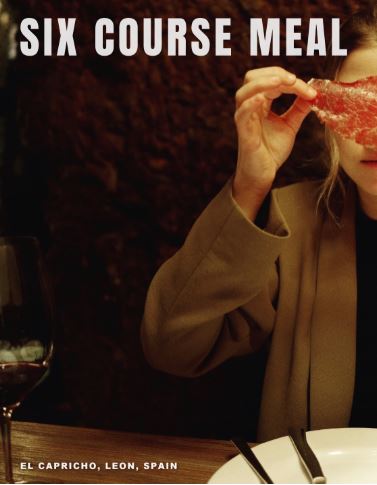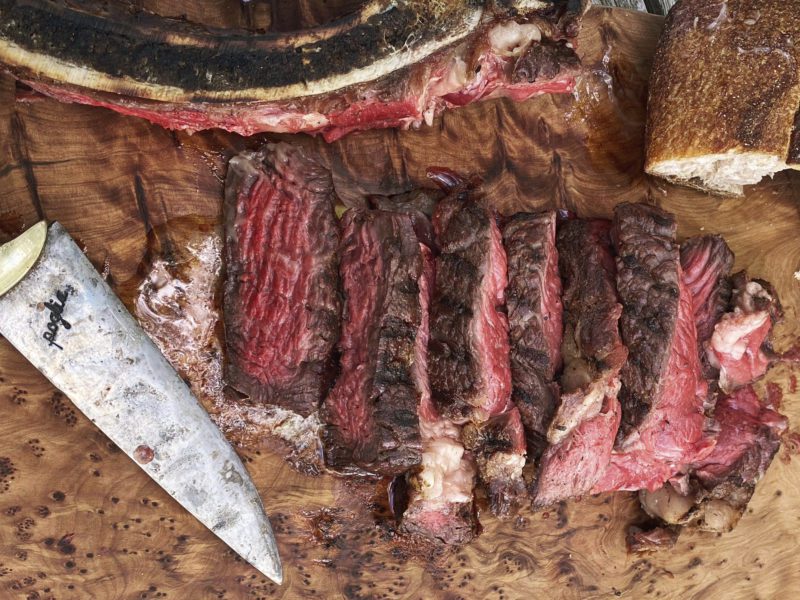Featured Posts
Six Course Meal: Spain
Are you still stuck at home… not traveling? To help ease the pain, we present a different kind of travel writing — fictional accounts of great travels with great — and real — food experiences. The author — Zoe Messinger — has done everything from running food trucks in Milan and Amsterdam, to cooking in two award winning restaurants in Los Angeles, and performing stand-up comedy. And, like us, she still believes there’s magic around a dining table, even if you can’t get there right now. Here with the fourth in a series of her flash fiction vignettes about some of the best off the beaten path restaurants from around the world — each a love affair with food, a journey of finding yourself through what you eat, and perhaps the best part — each paired with a recipe inspired by the meal. While you’re stuck at home, you can now escape to Paris, The Amalfi Coast, Hong Kong, Spain, Sweden, and Los Angeles. And, in case you’re wondering, Zoe is currently stuck in Pennsylvania, eating her way through the fridge. Zoe’s fourth “report”: Spain.

Steak Affair
I went to Spain for my birthday and drove to a small town in the middle of nowhere to eat in a cave. It was a five-hour meal of rare, bloody steak—some raw, some chopped, some seared, some aged. I loved every bite. I called it a steak affair, and it’s the only time I ever cheated.
“The chef is coming over,” our server said, his Spanish thick and chocolatey, “to show you your meat”. El Capricho smelled the way licking cement tastes, like minerals and dry-aged beef. We sat along the left side of the tunnel-shaped cave that led to a wine cellar in the back. Our wooden table was private, our own cozy enclave dimly lit by art-deco wall sconces.
“Ciento venticinco dias seco envejecido,” Chef announced. He was the owner of this world-renowned steak-out in Jiménez de Jamun, a father-like figure who made his customers feel at home in the middle of nowhere, surrounded by oxen.
“What did he say?” I asked M.
“He said meat is old as hell,” he said. “It’s going to be good.” He was well-plated tonight. I only understood kitchen Spanish. I spoke what I could derive from my half-assed Italian, but I knew the next question. The next question was always the same. The question you didn’t need to ask in a restaurant like this because your customers knew. We both looked Chef dead in the eye.
“Rare,” we said.
I smiled at Chef and bowed my head in gratitude for what I’d be putting in my mouth. I often took what I put in there for granted. I felt humbled to be here, a place so hard to reach, so worth your time. We rented a car in Madrid just to get there—a 4-hour drive, where we stopped along the way to eat coastal delicacies, like Pulpo a la Gallega, Piementos and Merluza, as Stan Getz jazzed in the background. It was my own Camino de Santiago—my Galician pilgrimage to find something greater than myself through food.
There was no cell reception in the cave. M had to run out to consult his sommelier friend about producers and vintages. He kept choosing obscure bottles, sought out, recherché, picking bottle after bottle the waiter suspected they might have in the cellar—only to come up empty. It took three somm-runs until they could fulfill his request.
“Castillo Ygay,” the server announced, sauced-back and spatchcocked, angling the bottle to display the label. It was a special bottle of Rioja Gran Reserva, over 30 years old. It was the only one left.
I took a sip. Strawberry, clove, and leather coated my mouth. Fresh, elegant, deep.
“Ahhhmm,” we breathed together, Rioja and I, uncorked in satisfaction.
Faint murmurs circulated as the other diners followed suit in our periphery. The server brought over our first snack—steak carpaccio so thin it was sheer. I chewed holes out like eyes, like kindergarten Lunchables bologna, held it up to my face like a mask.
“Nice to meat you,” I said to M, winking through the layers of blood and fat, mascara clinging. The wine laughed as its legs swirled up and down the tall glass. Our second snack was steak tartar, mostly fat. It melted in your mouth. I was melting into the moment, into the bliss. I felt at home in this cave, dancing with this steak, floating on this wine. Could life be like this forever? We sat, drinking and melting and drinking and melting, as more snacks came out, as our hearts and bellies beat to the rhythm of it all.
“Your steak,” the server announced. My version of you can now kiss the groom. Chef walked down the aisle of the cave carrying the meat like a wedding cake—marbled, cooked to perfection, oozing promise. He lowered it down on the table and kissed its cheeks on the wood, like he was leaving his only daughter to be adored and destroyed by someone new.
I looked down at her. My eyes started watering, overcome with the beauty of the moment. If I took a bite, was it the beginning of the end? Or would it just be a bite of good steak?
The cave cooled as the moon waned.
“Mmmm,” I sighed, taking a crater shaped bite—a bite of steak, sitting in my stomach, dry-aging through the decades.
Bodega El Capricho
Carrobierzo, 28, 24767
Jiménez de Jamuz, León, Spain
+34 987 66 42 24
Open daily for lunch and dinner
Simple Steak, Spanish Style

Serves 2
INGREDIENTS
Dry aged, thick-cut bone-in ribeye, at least 1 1/12 to 2 inches thick (can use a different cut too, chef’s choice)
Kosher salt and freshly ground black pepper
Vegetable oil (for grill top)
Crusty bread to scarpetta the jus
RECIPE
Generously season steak with salt, everywhere, including fat cap. Put steak on a wire rack set in a rimmed baking sheet and refrigerate, uncovered, overnight to dry out the exterior.
Set oven to the lowest temp possible, mine was 170°F. Get steak partially to temp in the oven (90-100°F internal). Time all depends on the thickness of the cut. A 2-inch cut, for instance, will take about 20-30 minutes. Cooking time can vary dramatically depending on many factors, so check often. You can adjust internal temperatures based on desired final temp (rare, medium, well). Here we’re shooting for rare, with a final internal temp around 125°F.
Meanwhile, start your grill. Build the biggest fire you can in a charcoal grill. I like using a mix of charcoal and wood. Japanese binchotan contributes great flavor + heat if you can get your hands on it.
When the grill is flaming hot, quickly oil grate, and transfer steak to the hottest part. Cook, turning frequently, until crisp and charred, 6-8 minutes, making sure to get the fat cap to melt too.
Transfer steak to cutting board, tent with foil, and let rest for 10 minutes. I like using a cutting board with a rim around the edge to catch the jus when cutting. The internal temperature will continue to rise about 5-10° while resting. Plan on taking the steak off grill at no more than 120° to account for that resting rise.
Cut steak against the grain in whatever slice thickness desired.
Transfer to serving plate and drizzle with jus. Serve with crusty bread and a hunk of butter. Pairs well with Rioja and flamenco.
*Editor’s Note: What’s your favorite emotional moment at a restaurant or memory?












